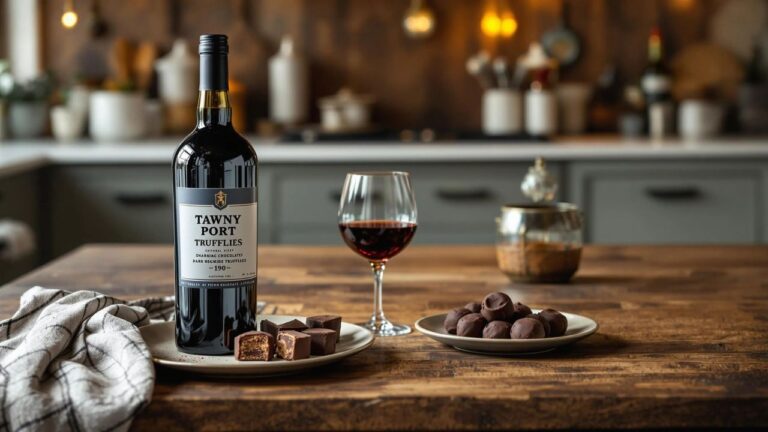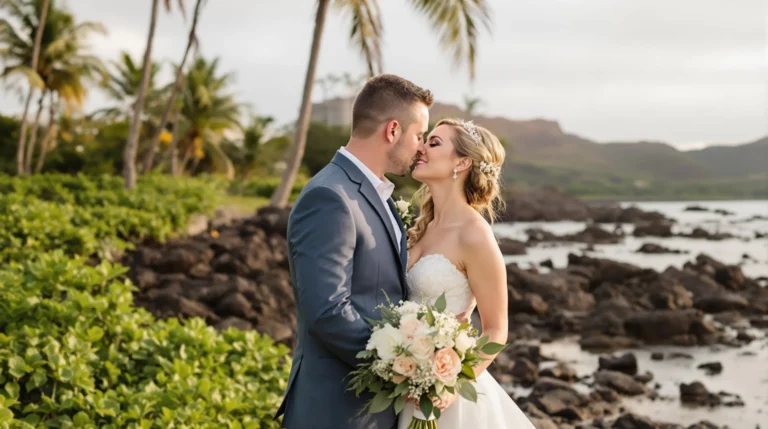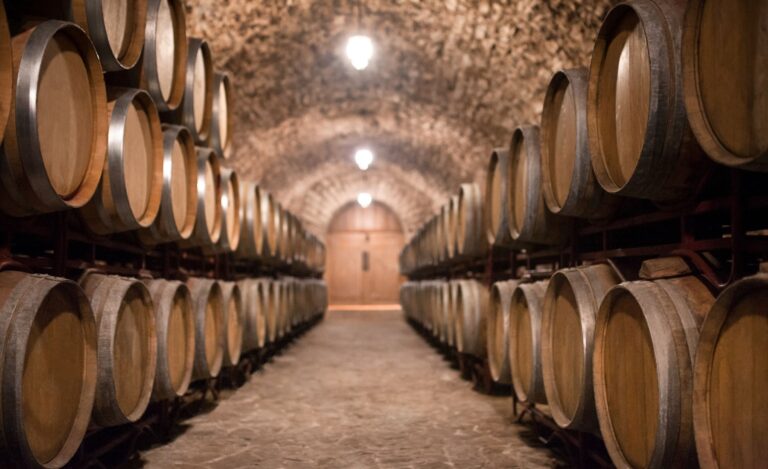Hawaii’s Unique Wine Scene
When most people imagine wine country, Hawaii doesn’t really comes to mind. And yet the Aloha State offers a fascinating twist on traditional wine tourism.
From Maui’s scenic ranchlands to the Big Island’s volcanic slopes, Hawaiian wineries blend the islands’ natural beauty with unique winemaking practices that showcase tropical flavors and innovation.
I’ve discovered that Hawaii’s wine scene is actually kinda interesting. You can find everything from signature pineapple wines at MauiWine to volcanic-influenced varieties at Volcano Winery. The islands even boast traditional grape varieties like Viognier, Chenin Blanc, and Syrah. For those seeking hands-on experiences, Oeno Winemaking on Oahu lets visitors create custom wines, while Kauai’s Nani Moon Meadery specializes in tropical honey wines made from local ingredients.
Wine Regions in Hawaii
Hawaii’s wine scene offers a distinctive twist on viticulture, with volcanic soils and tropical microclimates creating unique terroirs across the islands. Despite its geographical isolation, the Hawaiian archipelago has developed several notable wine-producing regions, each with its own character and specialties.
Maui
Maui stands as the crown jewel of Hawaiian winemaking, home to the iconic MauiWine (formerly Tedeschi Winery) established in 1974 at Ulupalakua Ranch. The 60-acre estate sits on rolling hills against the stunning backdrop of Haleakalā volcano, creating an idyllic setting for viticulture. The vineyard’s higher elevation provides ideal growing conditions for several grape varieties including Viognier, Syrah, and Malbec. However, what truly distinguishes Maui’s wine scene is its pioneering pineapple wines – a happy accident that became the island’s signature offering. The Maui Blanc, Maui Splash, and sparkling Hula O Maui showcase the vibrant tropical essence of the island while demonstrating remarkable sophistication. I’ve found their sparkling pineapple wine particularly impressive – it offers refreshing acidity without excessive sweetness, making it perfect for Hawaii’s climate.
Kona
The Big Island’s wine region benefits from the mineral-rich volcanic slopes of Mauna Loa, where Volcano Winery crafts distinctive wines at 4,000 feet elevation. This unique terroir produces wines unlike anywhere else on earth, with the active volcanic landscape lending a subtle minerality to the finished products. The winery specializes in both traditional grape varieties and tropical fruit wines, including their signature Symphony grape bottlings – a cross between Muscat of Alexandria and Grenache Gris that thrives in the volcanic soil. Visiting this winery offers a remarkable double experience: tasting exceptional wines while exploring Hawaii Volcanoes National Park. During my last visit, I was struck by how the dramatic landscape influences everything about the winemaking approach, from the cultivation methods to the flavor profiles. Their Symphony wine delivers beautiful floral notes with tropical undertones that perfectly capture the essence of the island.
Oahu
While Oahu might be better known for its urban attractions, it’s making waves in the wine world with innovative approaches to winemaking. Oeno Winemaking in Kailua represents a creative departure from traditional wineries, offering visitors a hands-on experience to craft their own custom wines. This urban winery lets enthusiasts participate in the winemaking process from fermentation through to creating personalized labels. Beyond production, Oahu boasts a sophisticated wine culture supported by knowledgeable sommeliers like Matthew Nelson at Pai Honolulu, who champions both local offerings and global selections. The island’s food-driven community has embraced wine as a natural extension of its culinary scene, creating a vibrant environment for wine appreciation. I’ve noticed that Oahu’s wine bars tend to feature thoughtfully curated lists that highlight both Hawaiian productions and international bottles, reflecting the island’s cosmopolitan character while maintaining its connection to local flavors.
Local Wineries and Vineyards
Hawaii’s unique terroir has birthed a distinctive wine scene unlike any other in the world. Volcanic soil combined with tropical microclimates creates perfect conditions for both traditional grape varieties and innovative fruit wines that have become the islands’ signature offerings.
Notable Wineries
MauiWine at Ulupalakua Ranch stands as one of Hawaii’s premier wine destinations, offering visitors a journey through scenic ranchlands to sample their signature pineapple wines alongside estate grape varieties. The winery’s Symphony grape—a unique cross between Muscat of Alexandria and Grenache Gris—produces exceptional wines that perfectly capture the island’s essence. On the Big Island, Volcano Winery crafts distinctive wines on volcanic slopes, combining traditional grape varieties with tropical fruits against the breathtaking backdrop of Volcanoes National Park. Their wines express a unique minerality that reflects the island’s volcanic landscape.
Oahu contributes to Hawaii’s wine scene with Oeno Winemaking, an urban winery in Kailua that revolutionizes the wine experience by allowing guests to create custom wines from scratch. After selecting your preferred varietals and completing the fermentation process, you can design your own label—creating a truly personal souvenir from the islands. For those exploring Kauai, Nani Moon Meadery provides a different twist on Hawaiian winemaking with tropical honey wines crafted from local ingredients, perfectly capturing the island’s natural bounty.
Vineyard Tours and Tastings
The wine touring experience in Hawaii combines breathtaking landscapes with unique tasting opportunities. At MauiWine, I recommend planning your visit to coincide with their specialty tours of the historic King’s Cottage, where you can sample limited-production wines while learning about the estate’s fascinating history. The journey there alone—winding through Ulupalakua Ranch’s rolling hills—makes for a memorable part of any Road to Hana adventure.
Volcano Winery offers intimate tastings that showcase how Hawaii’s volcanic terroir influences their wines. Their signature tastings pair local wines with island-made chocolates and cheeses, enhancing the flavors of both the traditional grape varieties (Viognier, Chenin Blanc, Syrah, and Malbec) and tropical fruit wines. For a hands-on experience, Oeno Winemaking’s custom wine-crafting sessions let you immerse yourself in the winemaking process from selection to bottling.
Most Hawaiian wineries operate daily with extended summer hours, though I advise checking websites before visiting as seasonal harvests may affect availability. Advance reservations for specialty tours ensure you’ll experience the best these unique wineries have to offer. The tasting fees typically range from $15-25 per person, with fees often waived with bottle purchases—making these experiences both accessible and value-packed for wine enthusiasts exploring Hawaii’s distinctive viticultural landscape.
Wine Varieties Available
Hawaii’s wine scene offers a surprising diversity of options despite its geographical isolation. The volcanic terroir and tropical climate create distinct flavor profiles you won’t find anywhere else in the world, making Hawaiian wines a truly unique experience for wine enthusiasts.
Local Grapes
The Hawaiian Islands cultivate several grape varieties that thrive in the volcanic soils and higher elevation areas. Symphony, a fascinating cross between Muscat of Alexandria and Grenache Gris, stands out as one of the most unique grape varietals grown in Hawaii. The rich volcanic soil imparts distinctive mineral notes to these wines that I find absolutely captivating.
Other grape varieties flourishing across the islands include Viognier, Chenin Blanc, Syrah, Malbec, and Grenache. These traditional vinifera grapes have adapted surprisingly well to Hawaii’s microclimate, particularly in the elevated volcanic regions. Due to the high humidity, winemakers ferment all grape wines in stainless steel tanks, sometimes adding oak staves to enhance flavor and texture profiles.
The higher altitude vineyards on the volcanic slopes produce wines with fascinating complexity, balancing tropical fruit notes with minerality that speaks directly to Hawaii’s unique terroir. When visiting, I strongly recommend trying a vertical tasting of locally-grown Syrah to experience how these wines develop distinctive characteristics unlike their mainland counterparts.
Imported Wines
Beyond locally-grown varieties, Hawaii’s wine scene embraces an impressive selection of imported wines that complement the islands’ diverse culinary landscape. Local sommeliers like Matthew Nelson of Pai Honolulu actively work to introduce guests to lesser-known selections that pair beautifully with Hawaii’s food-driven community.
Tropical fruit wines dominate the locally-produced offerings, with pineapple wine reigning supreme. These refreshing, not overly sweet creations have become signature products, with sparkling pineapple wines gaining particular popularity. MauiWine‘s Maui Blanc pineapple wine has become their bestselling product since its experimental beginnings in 1974. Guava wines and even macadamia nut honey wines further expand the tropical palette available to wine enthusiasts.
For those seeking traditional grape varieties not grown locally, Hawaii’s restaurants and wine bars curate impressive collections from renowned wine regions worldwide. Chilean Cabernet Sauvignon has found a receptive audience among island wine lovers who appreciate its bold dark fruit notes and approachable oak influence. I’ve noticed an increasing appreciation for these international selections as Hawaii’s wine culture continues to evolve and mature alongside its innovative local productions.
Pairing Wine with Hawaiian Cuisine
Hawaii’s culinary landscape offers a vibrant palette of flavors that pair wonderfully with both local and imported wines. The islands’ unique fusion of Polynesian traditions Pacific Rim influences and fresh local ingredients creates exciting opportunities for wine enthusiasts to explore harmonious food and wine combinations.
Traditional Dishes
When pairing wines with classic Hawaiian dishes like kalua pork the smoky earthiness calls for a wine with enough body to stand up to the rich flavors. A robust Syrah from Hawaii’s high-elevation vineyards works beautifully here with its bold dark fruit and subtle volcanic spice notes complementing the meat’s depth. For the beloved lomi lomi salmon a crisp Cayuga White provides the perfect counterpoint with its bright citrus character cutting through the dish’s salinity.
Poi the traditional staple made from taro root presents an interesting pairing challenge with its subtle flavor profile. Symphony an off-dry aromatic white featuring vibrant tropical fruit notes and a refreshing finish proves to be an excellent match. This Hawaiian signature grape expression enhances poi’s delicate character without overwhelming it. With dishes incorporating fresh seafood like poke a Chenin Blanc or Viognier showcases delicate fruit-forward qualities with floral aromatics that complement the fish’s natural flavors.
Hawaiian plate lunch staples such as sticky rice and macaroni salad find harmony with Gewürztraminer which offers aromatic spicy notes of lychee rose petal and subtle hints of ginger. For traditional luau dishes that feature varying flavors and textures pineapple wine provides a distinctly Hawaiian complement ranging from lively sparkling styles to playful sweet blends that bridge multiple flavor profiles.
Contemporary Flavors
Today’s innovative Hawaiian chefs blend traditional ingredients with modern techniques creating exciting new pairing possibilities. The island’s farm-to-table movement showcases locally grown produce alongside sustainable seafood often highlighted by elegant Pinot Noir Burgundy clones that express red cherry cranberry and gentle earthiness from high-elevation vineyards.
Restaurants like Pai Honolulu exemplify this contemporary approach where sommelier Matt Nelson recommends unexpected pairings such as Chilean Cabernet Sauvignon with fusion dishes. These selections offer “dark fruit and oak and everything else that a Napa Valley Cab drinker looks for“ while allowing the unique aspects of the grape to shine through alongside innovative cuisine like brisket bao buns and buttermilk fried oyster mushrooms.
Hawaii’s increasing focus on locally-sourced ingredients extends to cheese and charcuterie which pairs beautifully with small-production reds like Grenache Malbec and Petite Sirah. These wines offer depth and structure with juicy fruit and subtle savory notes that complement the rich dairy and cured meats. For Hawaii’s innovative desserts featuring tropical fruits like lilikoi passion fruit and guava a sweet pineapple wine or honey-based mead from Nani Moon Meadery provides the perfect sweet conclusion.
The evolution of Hawaiian cuisine has created a food-driven community where wine has become a natural extension of the dining experience. As both professionals and consumers develop greater appreciation for wine the pairing possibilities continue to expand reflecting the islands’ unique position at the crossroads of traditional Polynesian flavors and global culinary influences.
Comparison with Other Wine Regions
Hawaii’s wine production stands as a fascinating outlier in the global viticultural landscape. The islands’ unique volcanic terroir and tropical climate create wines with distinctive characteristics that set them apart from those produced in more traditional wine regions around the world.
California vs. Hawaii
When comparing Hawaii to California, the contrast is striking both in scale and approach. California boasts over 4,000 wineries spread across diverse AVAs, while Hawaii maintains just a handful of producers on three main islands. The terroir differences are equally dramatic – California‘s Mediterranean climate provides ideal conditions for growing traditional European grape varieties, whereas Hawaii’s tropical setting presents unique challenges that have led to innovation.
I’ve found that while California focuses on premium Cabernet Sauvignon, Chardonnay, and Pinot Noir, Hawaiian winemakers have embraced fruit wines and specialized grape varieties that can thrive in volcanic soil. Hawaii’s higher elevation vineyards on Maui and the Big Island benefit from cooler temperatures that help grapes develop properly, but they still produce wines with distinctly tropical characteristics unlike anything from Napa or Sonoma.
The production methodology differs significantly too. California wineries often employ large-scale operations with mechanized harvesting and processing, while Hawaiian wine production typically involves smaller, more hands-on approaches that reflect the islands’ artisanal food culture. This intimate scale allows Hawaiian winemakers to experiment with unique varieties like Symphony (a cross between Muscat of Alexandria and Grenache Gris) that might be considered too niche for larger commercial operations.
Global Wine Regions
Hawaii’s wine industry presents a fascinating contrast to established global wine territories. Unlike the ancient vineyards of Europe with centuries of tradition, Hawaiian winemaking is relatively young and unburdened by rigid appellations or classifications. This freedom has allowed for greater experimentation with both traditional grapes and tropical fruits.
The volcanic soils of Hawaii share similarities with regions like Sicily’s Mount Etna or parts of New Zealand, producing wines with distinctive minerality. However, Hawaii’s position near the equator places it outside the traditional 30th-50th parallel band where most global wine regions exist. This geographical anomaly means Hawaiian winemakers must adapt European techniques to tropical conditions.
I’ve noticed that while Old World regions focus primarily on terroir expression through traditional varieties, Hawaiian wines embrace a New World approach that celebrates innovation. The islands’ pineapple wines have become signature products that distinguish Hawaii in the global marketplace, offering something completely different from the Rieslings of Germany or the Malbecs of Argentina.
What truly sets Hawaiian wine apart is how it reflects the islands’ multicultural heritage. Just as Hawaiian cuisine blends Polynesian, Asian, and European influences, the wine scene incorporates diverse traditions while creating something uniquely its own. This cultural fusion creates wines that, while perhaps not competing with Bordeaux for prestige, offer authentic expressions of Hawaii’s distinctive sense of place and innovative spirit.
Hands-On Experience with Wine in Hawaii
I recently had the opportunity to immerse myself in Hawaii’s vibrant wine scene, discovering that the experience extends far beyond simple tastings. The islands offer unique hands-on encounters that transform visitors from passive observers to active participants in the winemaking journey.
At Oeno Winemaking in Kailua, I created my own custom wine from scratch—a memorable experience that perfectly captures Hawaii’s innovative approach to viticulture. After selecting my preferred grape varieties, I worked alongside skilled vintners to blend, ferment, and eventually bottle my creation. The highlight was designing my personalized label, turning this liquid souvenir into a tangible memory of my Hawaiian adventure.
MauiWine‘s historical tasting room, housed in the former guest cottage of King Kalākaua, provided an atmospheric setting to sample their renowned pineapple wines. The “King’s Visit“ tasting experience includes exclusive access to limited production varieties not available elsewhere, allowing me to taste the intersection of Hawaiian history and contemporary winemaking techniques.
At Volcano Winery on the Big Island, I participated in their “Volcanic Terroir“ workshop where I learned how the mineral-rich volcanic soil influences the flavor profile of their wines. The hands-on soil sampling activity gave me a deeper appreciation for how Hawaii’s unique geography contributes to the distinctive character of locally produced wines.
For those seeking total immersion, several vineyards offer harvest experiences during peak seasons. I joined the grape harvest at a small boutique winery, working alongside locals to pick, sort, and crush grapes. The satisfying physical labor concluded with a farm-to-table dinner paired with previous vintages—a perfect celebration of the day’s efforts.
The tropical wine blending classes available at various locations across the islands provide another interactive experience. I experimented with combining traditional grape wines with local fruit wines, creating unique flavor profiles that capture Hawaii’s agricultural diversity. These sessions typically include instruction on the basics of wine tasting, helping participants develop their palate while crafting something entirely new.
Wine and food pairing workshops have become increasingly popular throughout Hawaii. I attended a session that matched local wines with traditional Hawaiian dishes, demonstrating how the bright acidity of pineapple wine cuts through the richness of kalua pork, while the subtle sweetness in a tropical mead perfectly complements the complex flavors of poke.
For a truly distinctive experience, Nani Moon Meadery on Kauai offers honey wine making demonstrations that showcase how local Hawaiian honey transforms into complex meads. Their hands-on workshops explore the ancient craft of mead making while incorporating tropical ingredients unique to the islands.
These participatory wine experiences across Hawaii provide a deeper connection to the islands’ distinctive approach to winemaking. Rather than simply tasting the final product, these hands-on opportunities reveal the creative process behind Hawaii’s innovative wine culture, making them essential additions to any wine enthusiast’s Hawaiian itinerary.





